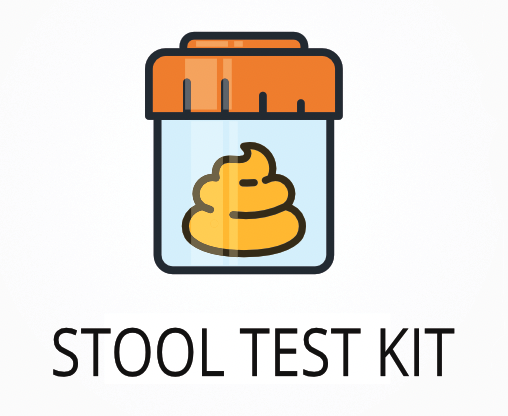Ordering the GI360 Microbiome Profile by Doctor’s Data | Canada
The GI360 Microbiome Profile helps identify the balance and diversity of gut bacteria, yeast, and other microbes that can affect digestion, mood, and immune response. This test uses advanced DNA analysis to detect over 45 different gut organisms, providing a detailed look at how your gut flora may be linked to symptoms like bloating, constipation, diarrhea, fatigue, and skin issues. Interestingly, this test can also reveal patterns in your gut bacteria that may be connected to mood swings and food intolerances, which are often overlooked in routine digestive testing.
Ordering the GI360 Microbiome Profile offers several specific benefits:
- Detects imbalances in gut bacteria that may contribute to digestive discomfort, such as gas, bloating, or irregular bowel movements.
- Identifies the presence of yeast or Candida that could be linked to chronic fatigue or recurring yeast infections.
- Assesses markers related to gluten and lactose sensitivity, helping clarify the cause of food-related symptoms.
- Measures inflammation markers that may be tied to skin problems or unexplained weight gain.
- Provides actionable data on prebiotic and probiotic needs based on your unique gut flora profile.
Who Should Consider Gut Microbiota DNA Analysis
People who have tried multiple diets or supplements for digestive issues without lasting relief may find this test especially helpful. For example, someone who has ongoing stomach pain, mood changes, and skin flare-ups after eating certain foods might use this test to pinpoint which gut bacteria are out of balance and guide targeted changes.
Ordering this test may also be useful in these situations:
- Persistent bloating or gas that does not improve with common remedies
- Unexplained fatigue or brain fog that seems to follow meals
- Recurring yeast infections or Candida symptoms despite treatment
- Skin problems like eczema or acne that flare up with digestive symptoms
- Unexpected weight gain that started after a course of antibiotics, which can disrupt gut flora
Testing for gut microbiota imbalances can help identify the root cause of symptoms like constipation, diarrhea, or food intolerance, allowing for more targeted changes in diet or supplements. Delaying this test may mean missing early signs of gut imbalance, which could make symptoms harder to manage over time.
Preparing for Stool Microbiome Testing
Fasting is not required for this test, but it is best to avoid probiotics and prebiotics for at least 48 hours before collecting your sample. Always follow the specific instructions provided by your doctor or healthcare practitioner to make sure your sample is collected and shipped correctly for the most useful results.
Labs Included When Ordering Your GI360 Microbiome Profile
| Test Name | Reference Range | Significance | Low and High Levels of GI360 Microbiome Profile |
|---|---|---|---|
| Bacterial Markers | |||
| Acinetobacter junii | Not detected | This bacterium is rarely found in healthy gut flora and may be linked to infections or inflammation if present. | High levels mean possible infection or gut inflammation.
Low levels mean typical healthy gut flora. |
| Actinobacteria | 5-10% | Actinobacteria help break down complex carbs and support immune function in the gut. | High levels mean possible overgrowth, which may cause gas or bloating.
Low levels mean reduced fiber breakdown and possible immune changes. |
| Actinomycetales | Not detected | This order of bacteria is not usually present in large amounts in the gut and may indicate imbalance if detected. | High levels mean possible gut flora disruption.
Low levels mean normal gut balance. |
| Akkermansia muciniphila | 0.5-5% | Akkermansia supports the gut lining and may help regulate weight and inflammation. | High levels mean possible gut lining irritation.
Low levels mean reduced gut barrier support and may be linked to weight gain. |
| Alistipes onderdonkii | Not detected or low | Alistipes species are linked to gut health and may play a role in mood and inflammation. | High levels mean possible inflammation or mood changes.
Low levels mean typical gut flora. |
| Alistipes spp. | Not detected or low | These bacteria may be linked to digestive symptoms and mood swings if out of balance. | High levels mean possible gut inflammation.
Low levels mean normal gut flora. |
| Bacilli Class | 10-20% | Bacilli help with digestion and protect against harmful bacteria. | High levels mean possible imbalance or infection.
Low levels mean reduced protection against pathogens. |
| Bacteroides fragilis | 1-5% | This species helps break down food and supports gut barrier function. | High levels mean possible gut inflammation.
Low levels mean reduced digestion of complex foods. |
| Bacteroides pectinophilus | Not detected or low | This bacterium helps digest plant fibers and may support gut health. | High levels mean possible fiber over-fermentation.
Low levels mean reduced fiber breakdown. |
| Bacteroides spp. & Prevotella spp. | 20-30% | These groups are key for digesting carbohydrates and plant fibers. | High levels mean possible carbohydrate over-fermentation.
Low levels mean reduced fiber digestion. |
| Bacteroides stercoris | Not detected or low | This species is part of normal gut flora but can be linked to gut symptoms if out of balance. | High levels mean possible gut irritation.
Low levels mean typical gut flora. |
| Bacteroides zoogleoformans | Not detected or low | This bacterium is rarely found in the gut and may indicate imbalance if present. | High levels mean possible gut flora disruption.
Low levels mean normal gut balance. |
| Bifidobacterium spp. | 5-10% | Bifidobacteria help digest fiber, support the immune system, and may reduce inflammation. | High levels mean possible over-fermentation.
Low levels mean reduced fiber digestion and immune support. |
| Catenibacterium mitsuokai | Not detected or low | This bacterium is linked to carbohydrate fermentation and may affect gas production. | High levels mean increased gas or bloating.
Low levels mean typical gut flora. |
| Clostridia Class | 10-20% | Clostridia help break down fiber and produce short-chain fatty acids for gut health. | High levels mean possible toxin production or gut irritation.
Low levels mean reduced fiber breakdown. |
| Clostridium L2-50 | Not detected | This species is not usually present in healthy guts and may be linked to gut symptoms if detected. | High levels mean possible gut flora disruption.
Low levels mean normal gut balance. |
| Clostridium methylpentosum | Not detected | Rarely found in healthy gut flora, this bacterium may indicate imbalance if present. | High levels mean possible gut flora disruption.
Low levels mean normal gut balance. |
| Coprobacillus cateniformis | Not detected or low | This bacterium is linked to fiber fermentation and may affect gas production. | High levels mean increased gas or bloating.
Low levels mean typical gut flora. |
| Dialister invisus & Megasphaera micronuciformis | Not detected or low | These bacteria are involved in fermentation and may affect gut pH and gas production. | High levels mean increased gas or changes in gut acidity.
Low levels mean typical gut flora. |
| Dorea spp. | Not detected or low | Dorea species are linked to carbohydrate fermentation and may affect gas and bloating. | High levels mean increased gas or bloating.
Low levels mean typical gut flora. |
| Enterobacteriaceae | 0-1% | This family includes bacteria that can cause gut infections if overgrown. | High levels mean possible infection or inflammation.
Low levels mean normal gut flora. |
| Escherichia spp. | 0-1% | Escherichia includes E. coli, which is normal in small amounts but can cause symptoms if overgrown. | High levels mean possible infection or diarrhea.
Low levels mean normal gut flora. |
| Eubacterium biforme | Not detected or low | This bacterium helps produce short-chain fatty acids that support gut lining health. | High levels mean possible over-fermentation.
Low levels mean reduced gut lining support. |
| Eubacterium hallii | Not detected or low | This species helps produce butyrate, a key nutrient for gut cells. | High levels mean possible over-fermentation.
Low levels mean reduced butyrate production. |
| Eubacterium rectale | Not detected or low | This bacterium is important for gut lining health and short-chain fatty acid production. | High levels mean possible over-fermentation.
Low levels mean reduced gut lining support. |
| Eubacterium siraeum | Not detected or low | This species helps break down plant fibers and supports gut health. | High levels mean possible fiber over-fermentation.
Low levels mean reduced fiber breakdown. |
| Faecalibacterium prausnitzii | 5-10% | This bacterium is a key producer of butyrate, which supports gut lining and reduces inflammation. | High levels mean possible over-fermentation.
Low levels mean reduced gut lining support and increased inflammation risk. |
| Firmicutes | 40-60% | Firmicutes help digest fiber and produce nutrients for gut cells. | High levels mean possible weight gain or gut imbalance.
Low levels mean reduced fiber digestion. |
| Lachnospiraceae | 10-20% | This family helps produce short-chain fatty acids and supports gut lining health. | High levels mean possible over-fermentation.
Low levels mean reduced gut lining support. |
| Lactobacillus ruminis & Pediococcus acidilactici | Not detected or low | These bacteria help ferment lactose and support gut health. | High levels mean possible lactose over-fermentation.
Low levels mean reduced lactose digestion. |
| Lactobacillus spp. | 1-5% | Lactobacillus helps digest lactose and supports immune function in the gut. | High levels mean possible over-fermentation.
Low levels mean reduced lactose digestion and immune support. |
| Mycoplasma hominis | Not detected | This bacterium is not usually present in the gut and may indicate infection if detected. | High levels mean possible infection.
Low levels mean normal gut flora. |
| Parabacteroides johnsonii | Not detected or low | This species helps break down plant fibers and may support gut health. | High levels mean possible fiber over-fermentation.
Low levels mean reduced fiber breakdown. |
| Parabacteroides spp. | Not detected or low | These bacteria help digest plant fibers and may support gut health. | High levels mean possible fiber over-fermentation.
Low levels mean reduced fiber breakdown. |
| Phascolarctobacterium spp. | Not detected or low | These bacteria help produce short-chain fatty acids that support gut lining health. | High levels mean possible over-fermentation.
Low levels mean reduced gut lining support. |
| Proteobacteria | 0-1% | Proteobacteria include bacteria that can cause gut infections if overgrown. | High levels mean possible infection or inflammation.
Low levels mean normal gut flora. |
| Ruminococcus albus & R. bromii | Not detected or low | These bacteria help break down resistant starches and support gut health. | High levels mean possible over-fermentation.
Low levels mean reduced starch digestion. |
| Ruminococcus gnavus | Not detected or low | This species is linked to gut inflammation if present in high amounts. | High levels mean possible gut inflammation.
Low levels mean typical gut flora. |
| Streptococcus agalactiae & Eubacterium rectale | Not detected or low | These bacteria are part of normal gut flora but may cause symptoms if out of balance. | High levels mean possible gut irritation.
Low levels mean typical gut flora. |
| Streptococcus salivarius ssp.thermophilus & S. sanguinis | Not detected or low | These bacteria help ferment lactose and may support gut health. | High levels mean possible lactose over-fermentation.
Low levels mean reduced lactose digestion. |
| Streptococcus spp. | 0-1% | Streptococcus species are normal in small amounts but can cause symptoms if overgrown. | High levels mean possible infection or inflammation.
Low levels mean normal gut flora. |
| Veillonella spp. | Not detected or low | These bacteria help ferment lactate and may affect gut pH. | High levels mean possible changes in gut acidity.
Low levels mean typical gut flora. |
| Vibrio cholerae | Not detected | This bacterium is not normally found in the gut and may cause infection if present. | High levels mean possible infection.
Low levels mean normal gut flora. |
Reference ranges may change slightly as new research and updates are made to the test.
GI360 Microbiome Profile FAQ
Is there GI360 Microbiome Profile testing near me?
This is a home test kit that you can collect yourself, and you can check the draw location link at the top of the page for more details. For those dealing with ongoing digestive symptoms, having a kit you can use at home makes it easier to collect a sample when symptoms are present, without needing to travel or wait for an appointment.
How do I interpret the test results?
While your treating physician should review your results, we also offer a one-on-one test results review with our clinical team to help you understand your report and next steps.
What is the cost of the test?
The price listed for this test includes standard shipping to you and return shipping to the lab, but draw fees may apply. Ordering this test can help you address gut symptoms more quickly by pinpointing the specific bacteria or yeast that may be causing your discomfort.
How often should I retest?
It is recommended to retest every 6-12 months, especially if you are making changes to your diet or supplements, to track how your gut flora is responding and to catch any new imbalances early.
How accurate is the test?
This test uses multiplex PCR and MALDI-TOF mass spectrometry for DNA-based detection, with a specificity of 98% and sensitivity of 97%. TrueHealthLabs.com partners with CLIA-certified and CAP-certified laboratories to uphold rigorous testing standards for dependable results.
Important Notes
- The test can be mailed and collected in Canada.
- You will be responsible for the shipping costs.
- Use a 2-day return mailer when sending the samples to the lab.
Medical Review Board
Reviewed by Jeff Donohue M.D. from Body Logic and Brady Hurst DC, CCCN. Written by True Health Lab’s team of editorial health contributors.
Disclaimer: This information is for educational purposes only and not intended as medical advice. Consult your healthcare provider for personalized guidance.
Why Customers Trust True Health Labs - What People are saying
Also rated 4.6 out of 5 based on 3452 ShopperApproved reviews- See all TrueHealthLabs.com reviews.






